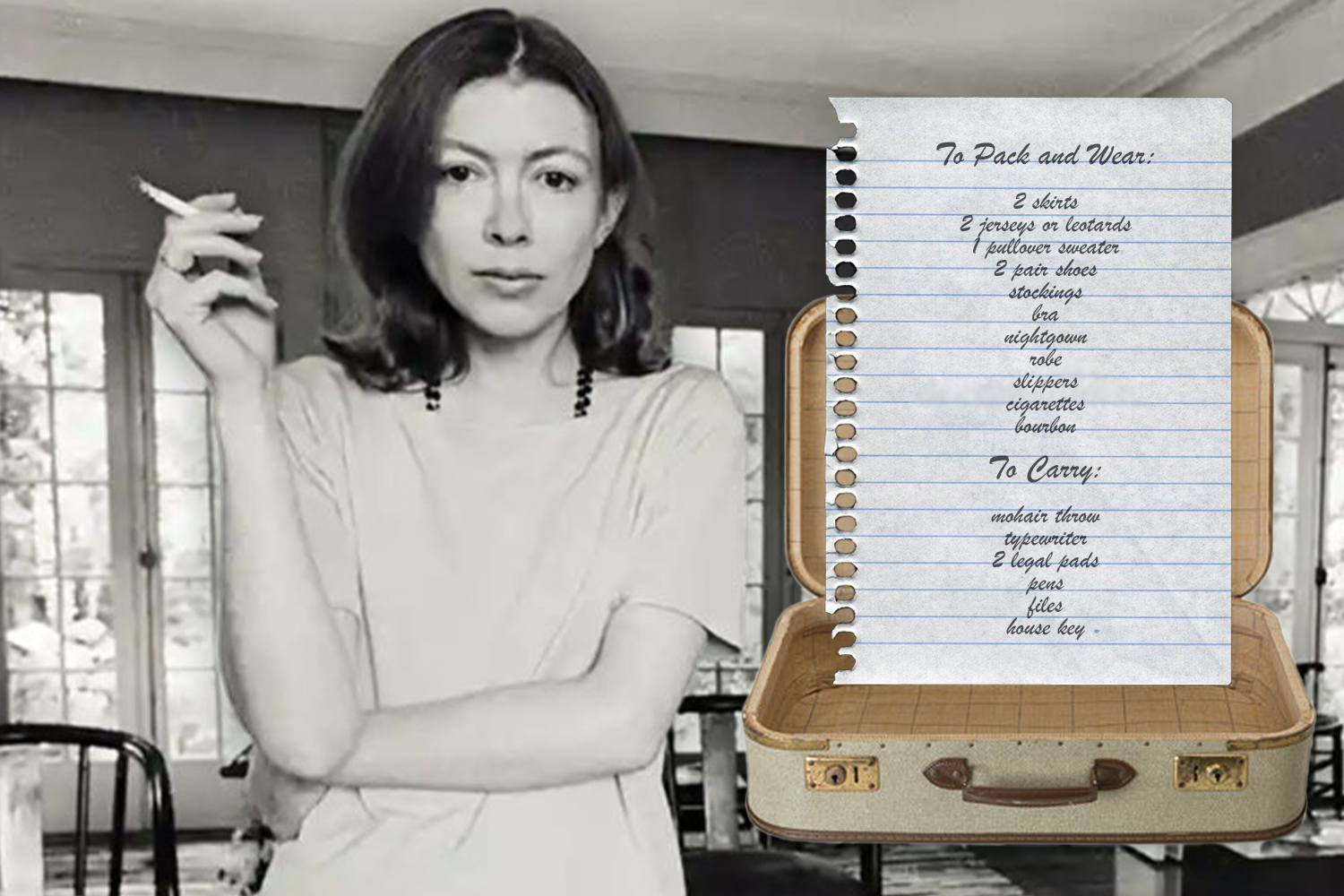Joan Didion: A Style Analysis
Graphic by Ruth Ellen Berry.
When she worked as a reporter, Joan Didion kept a list that allowed her to pack without a second thought, for a story of any kind. In her words, to “pass on either side of the culture.”
To Pack and Wear:
2 skirts
2 jerseys or leotards
1 pullover sweater
2 pair shoes
stockings
bra
nightgown
robe
slippers
cigarettes
bourbon
To Carry:
mohair throw
typewriter
2 legal pads
pens
files
house key
Detailed in the titular essay of her famed collection, “The White Album,” Didion shows the reader the wardrobe of a reporter. Someone who can pass between the foreground and the background, who can observe with the anonymity that a simple skirt and leotard provide.
During her literary career, Didion rose to a tier of fame that went beyond the words she wrote on the page. Her name has become synonymous with “cool,” “perceptive” and “aloof,” not just a woman and a writer, but an idea of one. An image that her stylishly simplistic wardrobe can’t be removed from.
Given her early career as a writer for Vogue, it’s unsurprising that photos of Didion show her wearing outfits that are simple yet composed with attention to detail. Her long, flowing skirts often were accompanied by fitted tops. Outfits made up of only solid, muted colors were stylized with variation in fit and texture. Her accessories were minimal but strong — their presence felt in the final look.
Photos courtesy of The Daily Beast (left) and The Guardian (right).
Didion knew how to put together outfits that were timeless and elegant. But it is worth questioning why the level of iconography that surrounds her style has achieved such fame. Because what is the beauty of the tan maxi dress and strappy sandal independent of the waif-like woman who fills it, unsmiling, leaning against the Corvette?
Image courtesy of Lifestyle Asia.
Perhaps because it’s emblematic of what “Joan Didion” has come to mean, and more often than not, what she has come to mean within the literary world. Her wardrobe implies precision and careful thought, consideration for the function and placement of details. It’s the wardrobe of someone who pays closer attention to what is often overlooked, making the ordinary imply something extraordinary. After all, Didion is the writer who explained her California upbringing by her musings on where the water that flowed from her faucet came from. She’s the writer who captured west coast migration in the story of a woman and her husband’s death in the San Bernardino Valley. She deals with the ordinary but does so in a way that you can’t help but look closer.
Images courtesy of Mic (left), V Magazine (middle) and The Fashion Elder.
What has come out of Didion’s celebrity is increased attention to her trademark coolness; the simplistic yet piercingly perceptive quality that infused her writing — that her clothing and overall persona exuded. Didion has become a symbol for those characteristics, existing in the public consciousness as the unsmiling woman on the back of the book. While she looks cooly into the camera, cigarette in hand, two brief sentences sum up Didion’s decades-long career as a revered, American author. “Joan Didion” is the now-famous packing list taped to the inside of a closet in her Hollywood apartment. Her former mechanism for anonymity is now a symbol of her iconography. The irony is too obvious to ignore.




